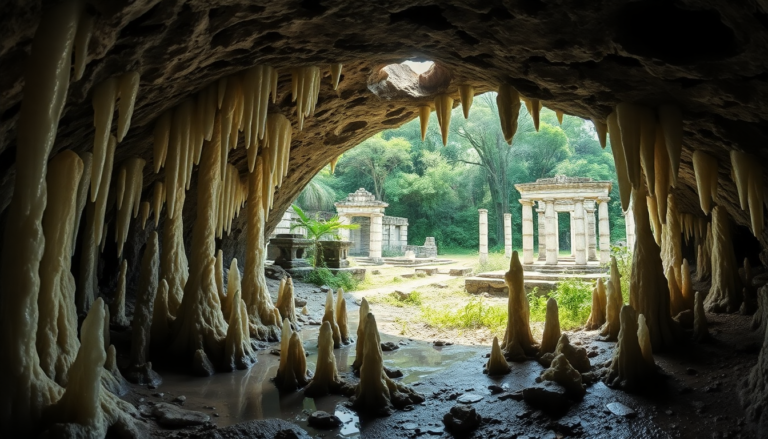Argomenti trattati
As we journey through history, the Maya civilization stands out as one of the most intriguing cultures, stretching from southern Mexico all the way to Central America. Picture this: vast territories once bustling with life, adorned with towering temples and enriched by remarkable astronomical insights. But in just two centuries, these vibrant cities became eerily silent, leaving behind unfinished monuments and ruins that whisper secrets of their past. So, what caused this dramatic decline? Surprisingly, the answer lies in something as unassuming as a stalagmite.
The Decline of the Maya Civilization
The fall of the Maya civilization, occurring between the 9th and 10th centuries AD, coincided with a series of severe droughts that gripped the region for extended periods. Recent research has shed light on this mystery, unveiling a staggering eight prolonged droughts during this era, including one that lasted an astonishing thirteen consecutive years. Interestingly, this crucial information didn’t come from ancient texts but emerged from the chemical composition of a stalagmite discovered in a cave on the Yucatán Peninsula, Mexico.
Led by an international team from the University of Cambridge, the analysis of this stalagmite has opened a window into the historical climate of the time. By examining the trapped oxygen isotopes, researchers were able to reconstruct seasonal rainfall variations with remarkable accuracy for the years between 871 and 1021 AD—the very timeframe when Maya cities began to empty and temples fell into disrepair.
Daniel H. James, the lead author of the study, emphasizes a critical insight, stating, “Understanding the average annual rainfall is less significant than grasping the characteristics of each individual rainy season. Isolating the rainy season allows us to accurately trace the duration of droughts, which ultimately determines crop success or failure.” This perspective invites us to consider how nuanced our understanding of weather patterns must be, especially for a civilization reliant on agriculture.
Scientific Insights from Stalagmites
The analysis of the Yucatán stalagmite uncovered eight distinct drought periods during the rainy season from 871 to 1021 AD, with each drought lasting at least three years. Among these, one drought stretched for an incredible thirteen years—an interval long enough to devastate any society dependent on agriculture. Despite the Maya’s sophisticated water management techniques, which included reservoirs, canals, and cisterns, the relentless absence of rain led to dire consequences: failed harvests, food shortages, and rising social tensions that ultimately eroded the political stability of their city-states.
These scientific findings align seamlessly with what we know from historical and archaeological records. In significant northern sites, such as the renowned Chichén Itzá, archaeologists have documented repeated interruptions in political activity and monument construction during the same decades marked by drought. This correlation suggests that climatic stress periods likely triggered a cascade of internal crises, contributing to the gradual abandonment of these once-thriving urban centers.
Nature’s Role in the Maya’s Downfall
While the collapse of the Maya civilization stemmed from a complex interplay of factors, the stalagmites of the Yucatán vividly illustrate the crucial role of nature in the downfall of one of the ancient world’s most captivating cultures. The relationship between climate and human resilience weaves a profound narrative—one where the whispers of the past resonate through geological formations, reminding us of the fragility of human endeavors against the forces of nature.
As we reflect on the lessons gleaned from the Maya civilization, we are encouraged to think about our own connections to the land, the significance of sustainable practices, and the rich stories that lie beneath the surface of our experiences. Much like a well-crafted dish, the past holds flavors that linger, inviting us to explore, learn, and cultivate a deeper appreciation for the delicate balance that sustains us all.

